Best “Doctor Who” Standalone Episodes For Beginners
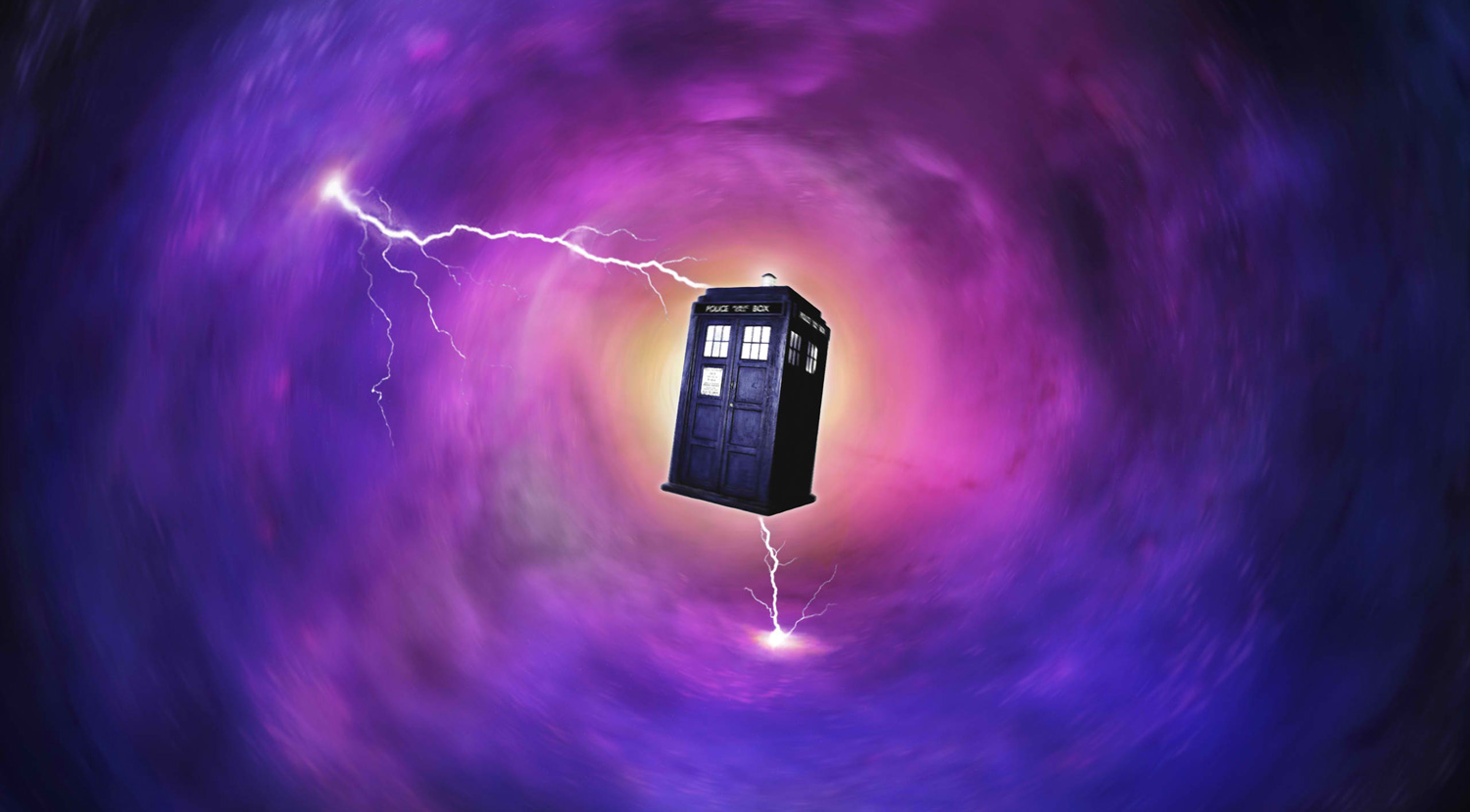 “Doctor Who” is the longest-running British TV show of all time (and one of the longest running shows ever), having aired its first episode all the way in 1964, when I’m positive none of the people reading this were even born yet. While it was insanely popular for a time (especially around when Tom Baker had the lead role, between 1974 and 1981), its fame slowly died down until the show got cancelled in 1989. While there were several attempts to revive it, it wasn’t until producer Russell T. Davies finally convinced the BBC to bring “Who” back to TV in 2005. The revived series (referred to by fans as “New Who”) was a smashing success not only in its native Britain, but also around the globe, with each subsequent season gaining more and more fans. Today, it’s extremely hard to find anyone who’s into sci-fi and isn’t a Whovian (the name “Doctor Who” fans have given themselves), but with “New Who” having just about to start its 10th series, and with 50 years of continuity behind us, it’s getting increasingly hard for people who want to get into “Doctor Who” to catch up.
“Doctor Who” is the longest-running British TV show of all time (and one of the longest running shows ever), having aired its first episode all the way in 1964, when I’m positive none of the people reading this were even born yet. While it was insanely popular for a time (especially around when Tom Baker had the lead role, between 1974 and 1981), its fame slowly died down until the show got cancelled in 1989. While there were several attempts to revive it, it wasn’t until producer Russell T. Davies finally convinced the BBC to bring “Who” back to TV in 2005. The revived series (referred to by fans as “New Who”) was a smashing success not only in its native Britain, but also around the globe, with each subsequent season gaining more and more fans. Today, it’s extremely hard to find anyone who’s into sci-fi and isn’t a Whovian (the name “Doctor Who” fans have given themselves), but with “New Who” having just about to start its 10th series, and with 50 years of continuity behind us, it’s getting increasingly hard for people who want to get into “Doctor Who” to catch up.
Luckily, the format of the show very much allows for jumping right into the middle of, say, Series 6 and enjoying it and understanding it just the same. While it does have a consistent cast of characters and an overarching plot, “Doctor Who” is best described as an anthology show, with each episode having its own plot, being set in a completely different place and time period and starring a completely different cast of side characters that interact with out protagonists. As such, each episode acts as its own story, and while some are connected to an overarching narrative (usually a season-long mystery that’s resolved in the finale), most can be viewed as their own stories that you can watch in a vacuum with very little prior knowledge about the series. Below I’ve outlined some of the best standalone episodes that you can pick up and watch right now even if you’ve never heard of “Doctor Who” before. I believe that they best showcase what the show is all about, both its strengths and its weaknesses. So if any of the descriptions catches your eye, be sure to give the episode in question a shot! Keep in mind that I’m only going to be showcasing “New Who” episodes – while there’s certainly a lot of really good “Classic Who” episodes, most haven’t really aged so well, and as such they can be a bit harder to watch for someone trying to get into the series.
Basic Things You Need To Know About “Doctor Who”
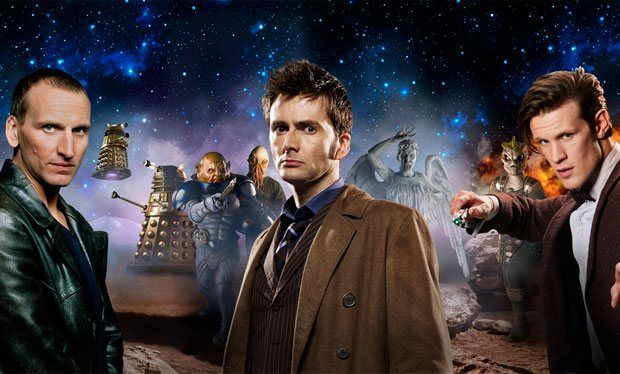
“Doctor Who” is the story of an alien calling himself the Doctor (not his real name, of course, but that’s the title he’s chosen for himself). His race, the Time Lords, have mastered time travel, but have a strict non-interference policy in order to avoid messing with the space-time continuum. The Doctor has chosen to break that rule, so he steals a time machine he dubs the TARDIS (Time And Relative Dimensions in Space) and decides to explore the universe. Very early on, however, his TARDIS malfunctions and, while originally designed to blend in with its surroundings, becomes permanently stuck as a police box from 1960s England. It also starts taking the Doctor to places where he is needed instead of to places where he actually wants to go – settings where oppression is rampant, or a group of people are under attack, or there’s some kind of larger mystery that needs solving. These places can be anywhere in time and space – near-future Moon, ancient Rome, present-day London or a futuristic spaceship. With a few exceptions, most episodes take place in entirely different settings. The Doctor is absolutely brilliant, with an intellect usually far superior to those around him and with a vast knowledge of the Universe, but the fact that he had to wipe out the entire race of the Time Lords in between “Classic Who” and “New Who” has forced him to become a pacifist, swearing that he could never harm anyone else like that again. To keep his morals in check, the Doctor often travels with a companion, who (in New Who) is always a young British woman. His companions change every once in a while, but so does the Doctor – when mortally wounded, he can “regenerate”, healing his injuries but also gaining an entirely new body and personality. In “New Who” he has been played by 4 different actors (well, 5, depending on how you’re counting – it’s a long story), and overall his current incarnation is number 12 – this has allowed the show to go on for so long. What makes “Doctor Who” unique from all other sci-fi shows is that the Doctor never uses any weapons and never harms his opponents if he can avoid it – he relies on his wit and his trusty sonic screwdriver (a multifunctional instrument that can open locks, hack computers and do a million other things… as long as you don’t use it on wood) to get him out of any dangerous situations.
Dalek
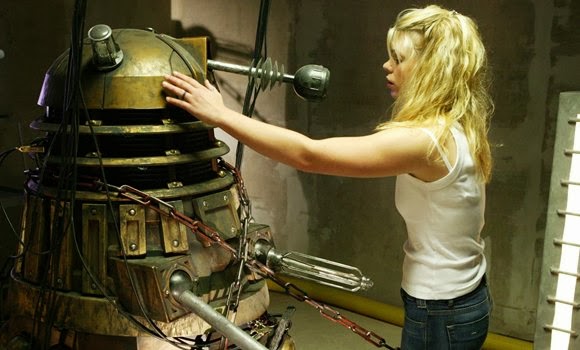
Doctor: Ninth (played by Christopher Eccleston)
Companion: Rose (played by Billie Piper)
Series: 1
Episode number: 6
The Doctor arrives in a museum dedicated to himself, with an owner that is absolutely obsessed with him. Even though the Doctor hates museums, he agrees to humor the owner and look at his collection. Everything goes well until the owner reveals his most prized possession – a real, living Dalek. The Daleks are the Doctor’s most dangerous enemies, having fought him multiple times across Classic Who, ultimately engaging the Time Lords in a war that forced the Doctor to wipe them both out. This Dalek is the last survivor of the most dangerous race in the Universe, and that has made it very, very desperate. After it inevitably breaks out of containment, the Dalek proves exactly how its race was able to give the most powerful civilization in all of time and space grief by proceeding to completely obliterate squad after squad of soldiers sent to recapture it. It’s the first true horror episode of “New Who”, and it is terrifying not just because the protagonists are faced with a creature that they truly can’t stop, but also because it’s one that’s the direct source of what the Doctor perceives as his greatest failure.
The Empty Child & The Doctor Dances
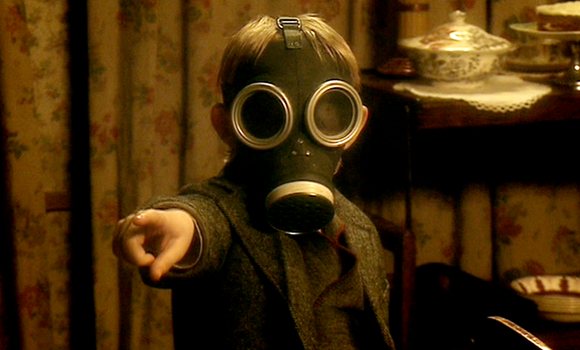
Doctor: Ninth (played by Christopher Eccleston)
Companion: Rose (played by Billie Piper)
Series: 1
Episode number: 9 & 10
Sure, “Dalek” was a scary episode, but what if I told you that it’s not even the most scary one of its season? No, that title would go to the two-parter “The Empty Child” and “The Doctor Dances”, which gave nightmares to pretty much every child who watched it ever. You often hear about how terrifying modern horror films are, but honestly, most of them are just blood and gore. “The Empty Child” manages to be terrifying while still maintaining a G rating, which is an achievement in and of itself. The Doctor travels to London at the height of the Blitz where he encounters a mysterious phenomena – a small child in a gas mask is looking for his mommy. Not a very strange sight for war-torn England, except for the fact that the child can turn anyone he touches into gas mask zombies which are completely invulnerable to anything that’s done to them. And let’s just say, the boy has no intention of stopping until he has found his mommy. Unlike “Dalek”, where the Doctor only has one invincible enemy to look out for, “The Empty Child” gives us dozens, and while the Daleks are more intimidating because of their actions rather than because of their looks, the gas mask zombies are by far some of the most terrifying things to ever grace a television screen. On top of that, the episodes also feature one of the best side characters in “Who” history in the form of the omnisexual Captain Jack Harkness (who became so popular that he got his own show shortly afterwards) and also one of the best endings the show has ever had, making them a must-watch for anyone even if you know nothing about “Doctor Who”.
The Girl In The Fireplace
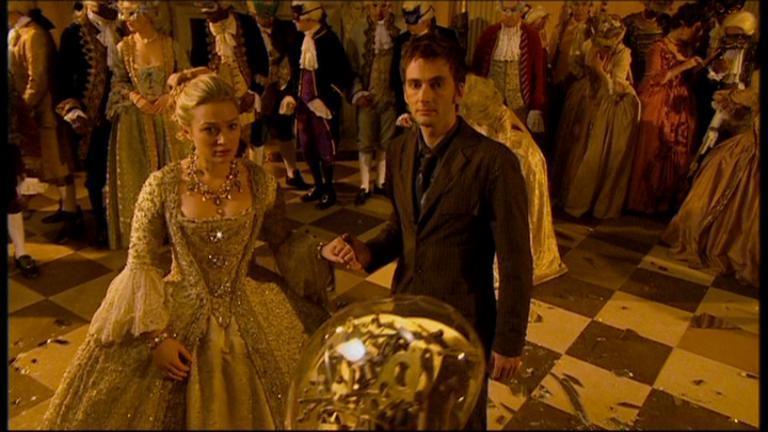
Doctor: Tenth (played by David Tennant)
Companion: Rose (played by Billie Piper)
Series: 2
Episode number: 4
Series 2 was considerably weaker than the first one, containing some of the worst episodes in the show’s history, such as the despicable “Love and Monsters”, but it also contains some of the best ones ever. Case in point – “The Girl in the Fireplace”, written by future showrunner Steven Moffat. The Doctor arrives in a futuristic spaceship where parts of it have been replaced by human organs. The crew is gone, but other than that there’s really nothing that out of the ordinary around… except for a completely out of place 18th century fireplace installed into one of the walls. Through it, the Doctor is able to establish a communication with a little girl in a completely different time and space (18th century France) who is plagued by monsters. The Doctor works with her in order to vanquish the monsters (which turn out to be the crew of the spaceship) and figure out exactly what’s going on, but there’s a catch – due to relativity, whenever the spaceship and the girl’s bedroom aren’t connected through the fireplace, time moves at different rates, with years passing in France for every minute in space. As such, the Doctor (and we) are allowed to see the girl grow and, ultimately, face the monsters that have been tormenting her since she was little. It’s definitely one of the most beautiful episodes of the show, as well as one of my absolute favorites. Nothing I can say can possibly do this cinematic masterpiece justice, so do yourself a favor and watch it!
Rise of the Cybermen & The Age of Steel
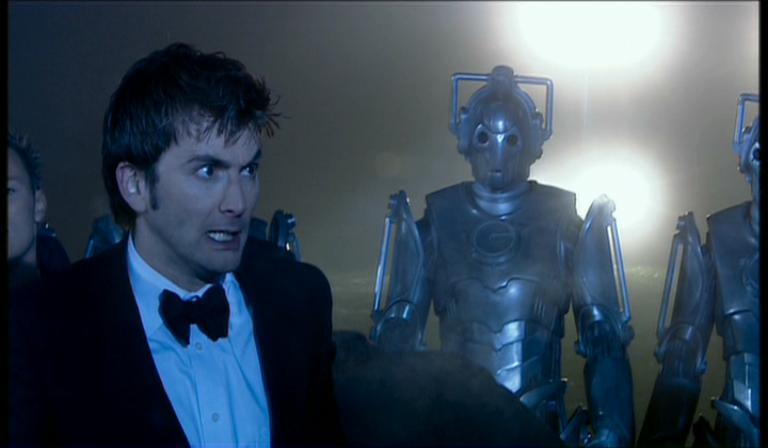
Doctor: Tenth (played by David Tennant)
Companion: Rose (played by Billie Piper)
Series: 2
Episode number: 5 & 6
Another two-parter, and one that re-introduces a classic “Doctor Who” enemy in a completely new light. The Doctor ends up in a parallel Earth, one that has grown excessively dependent on technology to the point where we all receive our news, social contacts and entertainment almost exclusively through our phones (well, to its credit, the episode was made 10 years ago). While it seems like life is generally better for everyone, with more stable economy and better human interaction, there’s a dark secret lurking in the shadows – a mega corporation has been secretly experimenting on homeless people by transplanting their brains into fully cybernetic bodies and stripping them of their memories and emotions in an attempt to create the perfect human race – one that can’t age, get sick or express any sort of individuality. The small resistance that fights this corporation is seen as a group of lunatics, and thus no one suspects anything when the worst happens and everyone is forced to undergo the conversion procedure that will irreversibly turn them into Cybermen. Can the Doctor do anything about it, or is this world already lost? This is definitely one of the darkest “New Who” episodes by far (I dare you not to cry during THAT scene, you’ll know it when you see it) which also serves as a subtle metaphor about how over reliance on technology will gradually make us lose our humanity.
Human Nature & The Family of Blood
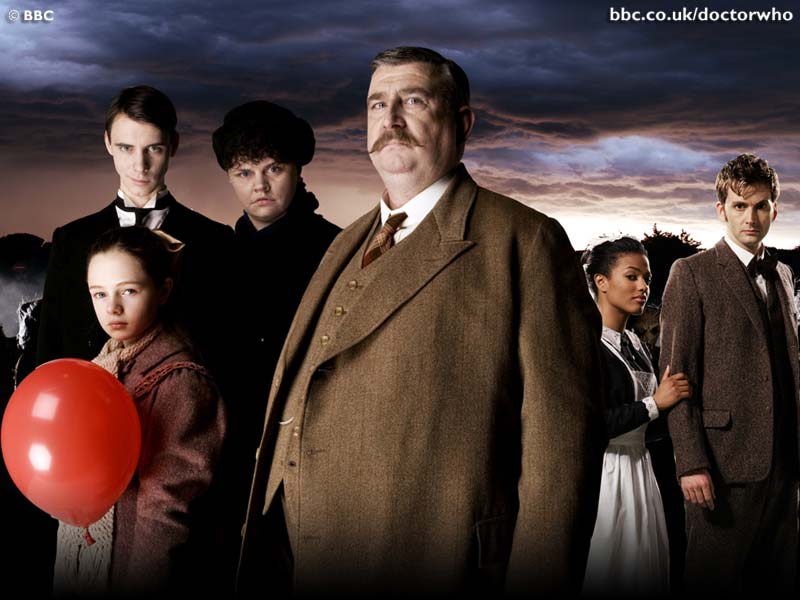
Doctor: Tenth (played by David Tennant)
Companion: Martha (played by Freema Agyeman)
Series: 3
Episode number: 8 & 9
Mr. John Smith is a completely ordinary teacher in an all-boys school in 1913 England. While definitely brilliant, he’s nothing out of the ordinary… And yet he can’t help but feel like he is. Mr. Smith often has dreams of being a fantastic man known as the Doctor who travels across space and time, has two hearts and encounters countless of evil creatures, some of which he has sketched. But, as it turns out, Smith only has one heart, so he can’t possibly be this Doctor. Meanwhile, a spaceship of invisible aliens crash-lands in the woods next to the school, and the aliens kill several people in order to take their physical form. Their plan is to find the Doctor, kill him and steal his regeneration energy so that they can become immortal and wreak havoc across the universe for all eternity. What is the human John Smith’s relation to the Doctor, if any, and can the Doctor return in time to stop the maniacal invaders? To really say any more about the plot would mean to reveal some major, major spoilers, so I’m going to keep this entry short and let you experience the story on your own. I promise, it’s got everything you could ever want – romance, horror, heartwrenching moments, action and some of the most human drama the show has ever seen.
Blink

Doctor: Tenth (played by David Tennant)
Companion: Sally (played by Carey Mulligan)
Series: 3
Episode number: 10
Much like “The Girl in the Fireplace”, this is yet another one of the “New Who” episodes that everyone agrees is among the best in the show’s history, and is also a brilliant place for newcomers since it barely even features the Doctor at all! Instead, the main character is a completely ordinary girl called Sally Sparrow, who goes in to investigate an old house with her best friend Kathy. Soon enough, Kathy disappears without a trace just as a young man knocks on the door of the house. The man claims to be Kathy’s grandson who has been instructed to bring a letter to this exact place at that exact time… Which is weird, considering he seems older than his grandmother. Soon enough, Sally learns about the Weeping Angels, who are known as the most vicious predator in the Universe. When you’re looking at them, they turn into stone statues, and you can’t really harm stone – even if you shatter them, that’s not going to do much to hurt them. But when nobody’s looking, they’re fast and incredibly agile. A single touch is enough to send you back in time, effectively killing you in the present and allowing the Angel to feed off the potential energy of what you could’ve been had they not interfered. And the worst part? There’s numerous Angels, and you can never be sure if a stone statue is actually an Angel in disguise. So whatever you do, don’t blink. Blink and you’re dead. The Weeping Angels are the only “Doctor Who” monster that debuted in “New Who” and reached immense levels of popularity, appearing in many episodes across the next few seasons, and there’s a very good reason why. If you don’t mind becoming afraid and paranoid every time you see a statue for the rest of your life, definitely give “Blink” a watch!
The Fires of Pompeii
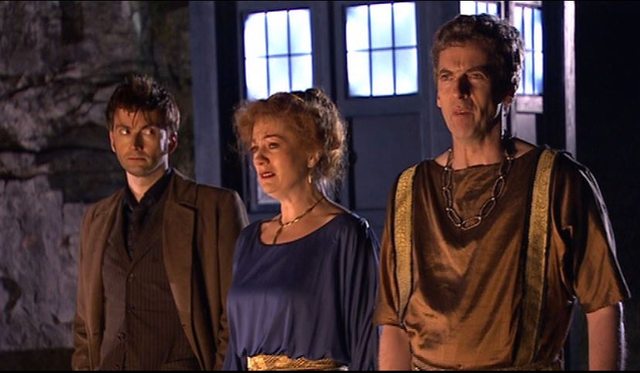
Doctor: Tenth (played by David Tennant)
Companion: Donna (played by Catherine Tate)
Series: 4
Episode number: 2
If you’ve ever wondered about why exactly the Doctor needs a human companion with him, you should definitely watch this episode. Sure, companions can be useful and occasionally give good ideas, even saving the Doctor’s life a couple of times, but that’s not really why they’re there. The Doctor re-learns that when he and his new companion Donna end up in Pompeii mere hours before the volcanic eruption which completely obliterates it. After losing the TARDIS to an eccentric modern art collector (played by future Doctor Peter Capaldi), the Doctor realizes that he has ended up in a fixed point in time, meaning that the events that unfold are critical and can’t be meddled with, or else the entire Universe will shift dramatically and could potentially end. Suddenly, he finds himself faced with a choice – save one city, and the people he has come to know, or let them die to ensure the timeline is preserved? Sadly, the episode doesn’t really delve all that much into the dilemma of sacrificing your happiness for the sake of security (at least not nearly as much as “The Waters of Mars”, which I’ll get to in a bit), and the answer is very clear cut from the start, since both the Doctor and the audience know that Pompeii must die, as that’s what happens in history. But the focus here, and what truly makes the episode shine, is on the companion. Catherine Tate (typically a comedian by trade) gives her usual sassy remarks throughout the episode (“They don’t even have a word for volcano!”, the Doctor says, to which she responds “Well, maybe they’re going to learn a new word AS THEY DIE!”), until she finally breaks down in the last few minutes. It’s heart-wrenching, and the episode by itself solidified Donna’s place among the very best companions the Doctor has ever had.
Silence in the Library & Forest of the Dead
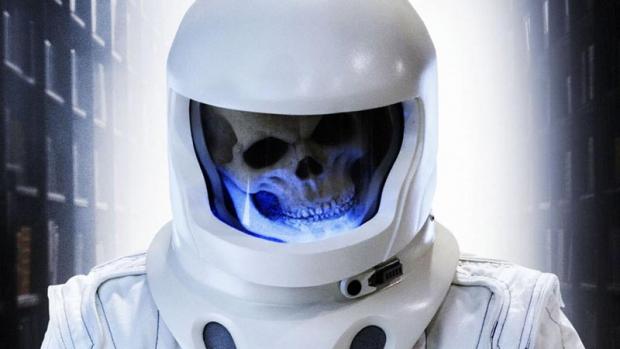
Doctor: Tenth (played by David Tennant)
Companion: Donna (played by Catherine Tate)
Series: 4
Episode number: 8 & 9
The Doctor ends up in the biggest library in the Universe, containing a physical and digital archive of every single book ever written. The library is so large and vast that it encompasses an entire planet, except there’s something wrong – it’s completely empty. There isn’t a soul left anywhere in the library, and soon the Doctor learns why. The planet is infested with the Vashta Nerada – invisible piranha-like monsters that swim in darkness. There’s trillions of them on the planet, and even a single step into the darkness will result in your leg being chewed to the bone instantly. But the Doctor isn’t the only one to investigate the phenomenon, as a team of archaeologists led by Dr. River Song (Alex Kingston) also appear on the scene. Soon enough, it becomes clear that even though the Doctor has no idea who Dr. Song is, she seems to know him very intimately, which she proves by whispering his real name into his ear (which is something that he had only told a select few individuals). Who is Dr. Song, really? How can an entire planet be rid of the most resilient parasite ever? And what happens when the Vashta Nerada get into the darkness of your spacesuit? This is yet another brilliant Steven Moffat episode which once again proves that he’s probably the best “Doctor Who” writer the show has had in its modern run.
Midnight
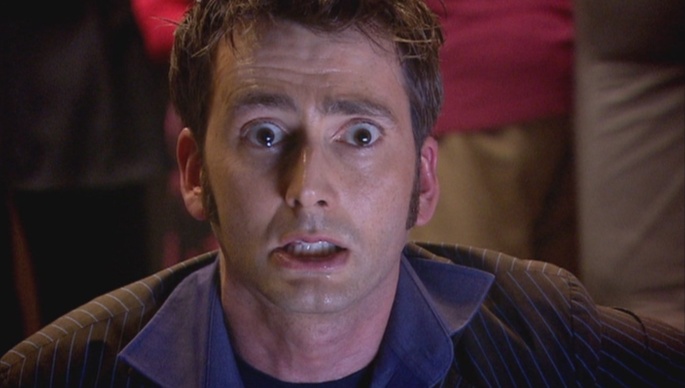
Doctor: Tenth (played by David Tennant)
Companion: None
Series: 4
Episode number: 10
The Doctor is usually the smartest man in the room – that’s what makes him so fun to watch, after all. No matter how many experts and geniuses there are around him, he’s still the smartest there by virtue of belonging to a race of hyper-intelligent beings who have mastered time travel. But wouldn’t that also make him the most suspicious? When he goes on a bus ride across the surface of a diamond planet which is filled with so much radiation that nothing unprotected can survive, the Doctor thinks he’s in for some downtime and a nice, relaxing, social experience. But soon it turns out that there IS something outside, something that doesn’t require a physical form to survive. And when it goes inside, the Doctor’s the only one who can stop it… If he can convince the rest of the passengers that he should be trusted. I mean, think about it – if you meet a strange, super intelligent man with little to no identification who suddenly starts barking orders to everyone, would you listen? In some circumstances maybe, but not when there’s a malevolent alien trapped in a tin box with you in the middle of nowhere. The stakes gradually grow higher and higher until at the end even the Doctor himself is covered in tears and sweat. It is an incredibly uncomfortable experience to behold, in all the best ways! “Midnight” is one of those episodes that were shot on a shoestring budget in order to save money for the finale and make that more spectacular than usual (“Blink” is another episode like that), but while most episodes like that are mediocre or even terrible, “Midnight” uses its small budget to its full advantage to craft one of the most unnerving episodes in “Doctor Who” history.
The Waters of Mars
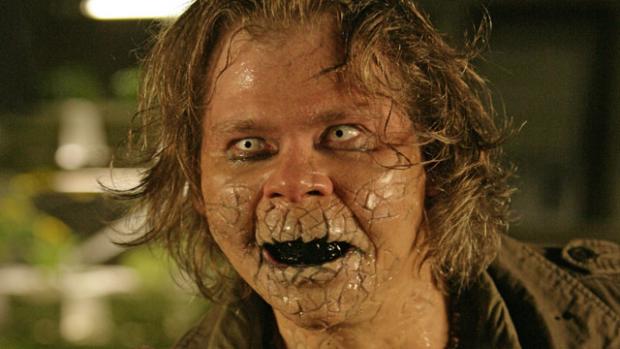
Doctor: Tenth (played by David Tennant)
Companion: Adelaide (played by Lindsay Duncan)
Series: None
Episode number: None
As it turns out, NASA was wrong – there is sentient life on Mars after all. Microscopic organisms that live in the water. And they really, really want their planet back. In this special episode released between Series 4 and 5, the Doctor ends up on humanity’s first semi-permanent base on Mars as he meets captain Adelaide Brooke and her crew, who are the first humans ever to create a settlement on a planet that’s not Earth. They’re pioneers, explorers, an inspiration for an entire generation… And they’re all about to die. Mere hours after the Doctor’s arrival, history dictates that Captain Brooke will cut communications and then activate the on-site nuclear missile, killing herself and her crew and completely destroying the entire base with no explanation. Those events are a fixed point in time – they absolutely have to happen, or else the entire Universe may be destroyed. In this case, Captain Brooke’s death inspired her granddaughter to become a pioneer herself, taking humanity to the stars and changing the course of history forever. Without the failure of the Mars mission, everything will change. So now the Doctor, who is known for never refusing to help, has to make a choice between walking away and letting a group of people he has come to know die, or risk the entire course of the Universe changing dramatically. And this time Donna isn’t around to tell him the right thing to do, and we as the audience have no idea what he’s going to choose. The tension grows gradually throughout the episode as not only the weight of the dilemma lingers in the mind of the Doctor, but also the very immediate danger of the aliens that started the whole thing. While a standalone episode, “The Waters of Mars” was a pivotal moment for both the show and its main character, and would have huge consequences going forward.
Vincent and the Doctor
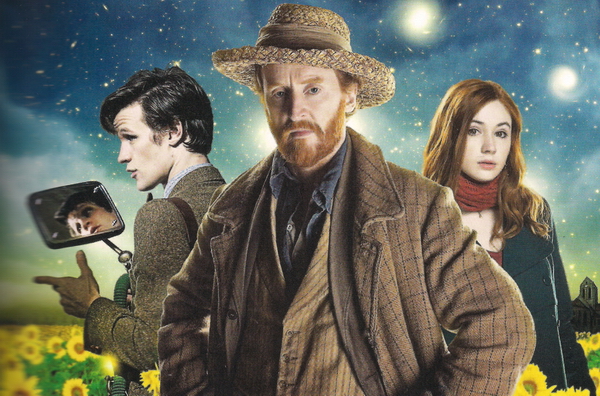
Doctor: Eleventh (played by Matt Smith)
Companion: Amy (played by Karen Gillan)
Series: 5
Episode number: 10
“Doctor Who” is no stranger to featuring historical characters – Charles Dickens, Winston Churchill, Agatha Christie and many more have all made appearances on the show, but they have always been little more than tools to advance an overall narrative, just instruments and novelties that often pay tribute to them, but are never actually about them, not really. The focus on those episodes is, just like the focus of 99% of all “Doctor Who” episodes, stopping an alien threat. “Vincent and the Doctor” isn’t like that at all, though. Is there an alien threat? Yeah, there is. Is there a monster of the week? Sort of, yes. But that’s not what the episode is about. Vincent van Gogh is one of those rare artists that were not only completely unappreciated at their time, but were also struggling with mental illness on top of it. Vincent never saw the world the way others do – just like the Doctor himself, he could see what most failed to notice. But while the Doctor is hailed as brilliant, Vincent’s peers merely think of him as mad. There’s really no point in talking about the plot of the episode much, because it’s really not what’s important here – distilled to its essence, it’s just another story of an invisible monster that only one special person can see, but nobody believes him and blah blah blah. No, the real beauty of “Vincent and the Doctor” comes in the portrayal of Vincent himself and in his interactions with someone who, much like himself, is different, an outcast, and yet so very brilliant. Those interactions, as well as the ending (which always – ALWAYS – makes me smile no matter how many times I watch it) make this episode truly worthwhile.
A Christmas Carol
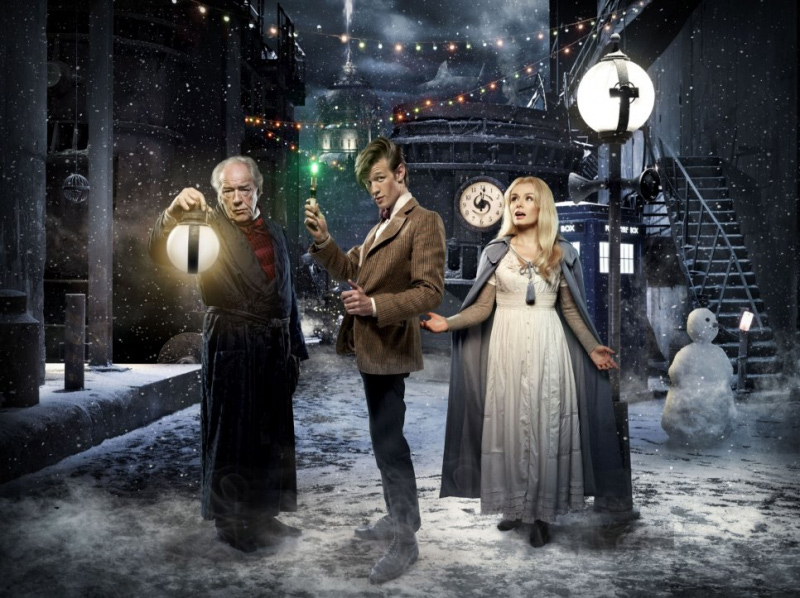
Doctor: Eleventh (played by Matt Smith)
Companion: Kazran (played by Michael Gambon)
Series: None
Episode number: None
The Christmas Special episodes are a beloved tradition of “New Who” – the very first episode featuring the freshly regenerated 10th Doctor was a Christmas one, and since 2005 we’ve had one special episode every Christmas. Sadly, most of them range from “kind of decent” to “oh God who thought this was a good idea”. I think we can all agree that the best one by FAR is 2010’s “A Christmas Carol”, which is so brilliant that I’ve been watching it every Christmas for the last 5 years. I feel like there’s just no better way to adapt Dickens’ classic story of a man’s past, present and future than to involve a time traveller in it. The Doctor is summoned to save a ship from crash-landing on a planet due to strange electrical clouds. These clouds were created by cruel businessman Kazran Sardick (played brilliantly by Michael Gambon, who also plays Albus Dumbledore in the “Harry Potter” franchise), who refuses to turn them off and allow the ship to land safely. Unwilling to use force in order to persuade him, the Doctor decides to instead take him on a trip back to his past, so he could see himself as the young, idealistic little boy that he once was. In the past, the Doctor discovers that throughout his early life he was enamored with a girl that his father – a banker – kept cryogenically frozen until her family could pay their debt. Releasing the girl from her sleep, the Doctor agrees to wake her up once a year so that Kazran can spend Christmas with her. The rest of the episode is a beautiful, if often heartwrenching journey into the life of Kazran as we follow him turn from a child with a crush into a young man madly in love and finally into a cruel old man perfectly willing to let thousands of people die. Once again, the ending is one of the episode’s strongest parts, and I wouldn’t dare spoil it for you. When you’ve got time around Christmas, you should definitely check it out!
The Doctor’s Wife
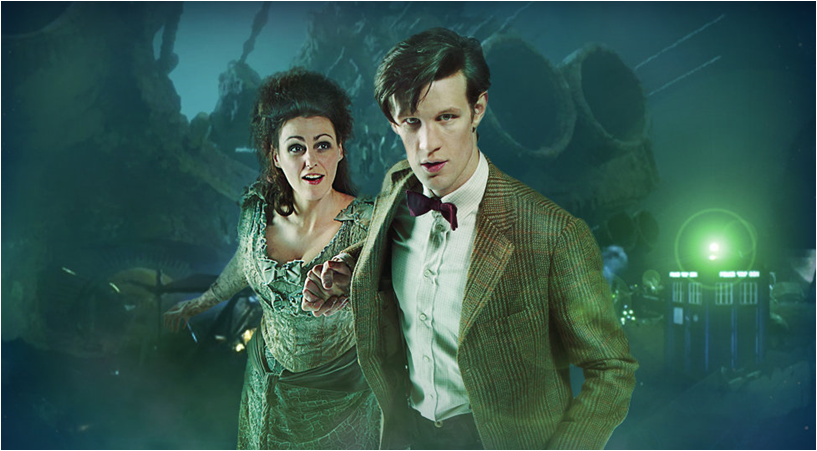
Doctor: Eleventh (played by Matt Smith)
Companion: the TARDIS (played by Suranne Jones)
Series: 6
Episode number: 4
The TARDIS has been the Doctor’s companion for literally as long as the show has existed. It’s really one of the two quintessential elements of the show (the other being the Doctor himself), to the point where “Doctor Who” as we know it couldn’t possibly exist without that blue box. But while the rest of the companions all have their quirks and personalities, the TARDIS does not, even though it’s alive. But what if it did? In this episode penned by the brilliant Neil Gaiman, the Doctor receives a Time Lord distress signal from a strange location just outside the boundaries of our universe. Excited to meet another of his race, he immediately rushes there… Only to discover that this was a trap set by a malevolent creature that lures Time Lords there in order to feed on their TARDISes. To achieve this, he uses a human host to house the “soul” of the TARDIS while he devours the body. Long story short, the Doctor gets a humanized TARDIS as a temporary companion, and it is fantastic! Half the fun of the episode is just watching the two quip at each other, with the TARDIS berating the Doctor for things such as always – always – pushing the door when the sign on it says “Pull to Open”. While I’m not usually a fan of the “previously inanimate object suddenly becomes animate” type of stories that so many shows are keen on doing, this is definitely one instance where I absolutely see the need of it happening. If you’re in the mood for something a little bit weird, this one is definitely worth checking out!
The Girl Who Waited
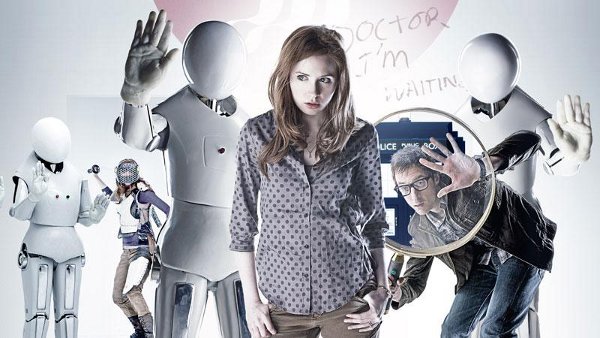
Doctor: Eleventh (played by Matt Smith)
Companion: Amy (played by Karen Gillan)
Series: 6
Episode number: 10
The Doctor and his companions (husband and wife pair Amy and Rory) end up in a hospital that has been completely devastated by a plague that kills species with two hearts, and since the entire population of the planet has two hearts, the entire hospital is only inhabited by androids who are capable of injecting medicine through their fingers. The Doctor, having two hearts himself, needs to remain quarantined in the TARDIS, so he sends Amy and Rory out to investigate. There’s three problems, though – first, the medicine the androids inject is lethal to humans; second – the androids see humans as “sick” since they don’t recognize most of the bacteria we naturally carry with us; and third – there’s a temporal anomaly in place. Case in point – Amy stumbles into one of them and finds herself separated from the Doctor and Rory and stuck in this hospital for over 30 years, having turned herself into a warrior in order to survive the misguided robots for decades. Naturally, she’s not too happy about what she sees as an abandonment, but is willing to forgive and forget as long as she’s let back in the TARDIS. But it’s not that simple, especially if Rory and the Doctor want their own Amy back. This episode is, most of all, an exploration of the question “What would happen if a companion was left behind?”, and it is heartbreaking to watch. While this may not be the best episode to start with (as people who aren’t familiar with the relationship between the Doctor and his companion may not get all the nuances of the story), it’s definitely a fantastic one nonetheless.
Asylum of the Daleks
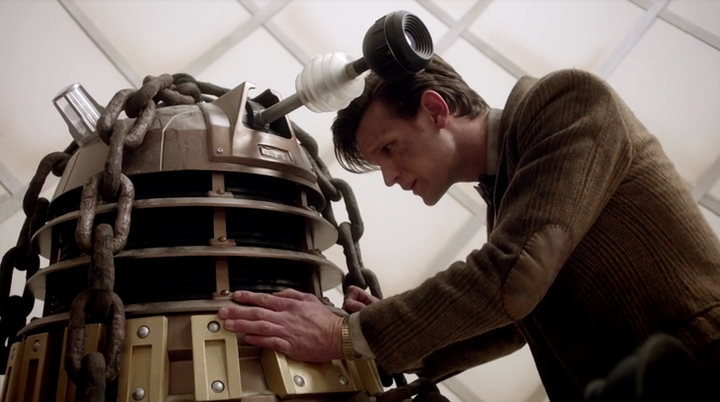
Doctor: Eleventh (played by Matt Smith)
Companion: Amy (played by Karen Gillan)
Series: 7
Episode number: 1
The Daleks, as you (probably) know by now, are the most dangerous race in the Universe. They’re essentially Nazis, if every Nazi came equipped with his own tank which could fly and shoot death rays. So when the Doctor and his companions answer a distress call and find themselves literally right in the middle of a newly resurrected Dalek civilization, they’re sure they’ll meet their doom… But then the Daleks say something they have never said in the history of the show – “Save us! Save us! The Doctor will save us!” As it turns out, the Daleks have a special planet they call the Asylum where they keep all the battle-damaged Daleks that have gone insane, unwilling to exterminate their own kind unless absolutely necessary. But recently, a human spaceship crashed into it, destroying part of the forcefield surrounding the planet and enabling the inmates to escape, though none have done so yet. The Doctor’s objective is to go down to the Asylum and disable the forcefield entirely, so that the Daleks can bomb the planet. When he descends, the Time Lord is aided by a young girl calling herself Clara Oswin (played by Jenna Coleman), who was the only survivor of the crash. Oswin is a brilliant hacker who has tucked herself away in the heart of the Asylum in order to survive. Honestly, there are two things that really stand out about this episode, which is definitely the strongest in what is probably the weakest series of “New Who”. First of all, this is the only episode besides “Dalek” to make the Daleks truly terrifying. If you thought unstoppable Nazi aliens were scary, how about unstoppable Nazi aliens who are also insane zombies? Yeah, you’re definitely going to be on the edge of your seat throughout the episode! The second part is, of course, the ending, which was one of the most shocking ones ever. Usually, when the actor playing the Doctor is switched, or a Companion arrives or departs, we’re told way in advance, but suffice to say that nobody saw what happened at the end of this episode coming. That’s all I can say without spoiling it. If you’re looking for a good, scary Dalek story that’s inspired by horror in all the right ways, this is definitely it!
Listen

Doctor: Twelfth (played by Peter Capaldi)
Companion: Clara (played by Jenna Coleman)
Series: 8
Episode number: 4
It’s a nightmare shared by billions of people across the universe, probably even by you as well. You’re sleeping, and all of a sudden you hear a noise. You remove the covers and step down on the floor… Only for a hand to suddenly grab your foot from under the bed. Why do so many people have that very particular nightmare? I mean, sure, lots of people dream of falling, or being chased by something, but those tend to be very broad and personalized, while the aforementioned example is rather specific. Could it be some kind of alien influence, or is it just a coincidence, some kind of innate fear in us? The Doctor (now played by renowned actor and longtime Whovian Peter Capaldi)
has set his sights on finding out. This is one of those extremely rare (almost unique) episodes where the Doctor isn’t prompted into action from some kind of call or situation that he finds himself in. We don’t start off with the TARDIS landing somewhere and our main characters going out and getting into trouble. This is obviously something very personal to the Doctor, a question he has asked himself numerous times in the past and has finally decided to do something about. The resulting adventure will take him and his companion to the past, the future and to a very special place that I wouldn’t dare spoil for you. Suffice to say, you’ll be pretty excited by the time the episode ends.
So, here you go, 16 standalone episodes that you can watch immediately with very little prior knowledge about the series as a whole! If you’re here, I assume that you’ve at least scrolled through this gigantic article (for which I thank you), so just pick the one that sounds the most interesting to you and have at it! If you live in the US, then all episodes I’ve described are available for streaming on Amazon Prime. If you’re in the UK, you can watch most of them (I believe with only 1-2 exceptions) on Netflix, or you can buy the episodes individually on the BBC store for about £2 each, which isn’t too bad for roughly an hour of entertainment (though obviously for the 2-part stories you’ll have to buy both parts). It’s really mind-boggling to me why the series isn’t available for streaming for free on BBC’s iPlayer, but I suppose it’s an expensive show to produce and as such requires fans to contribute a bit more. In any case, I hope you found this guide helpful!

I must say you have hi quality posts here.